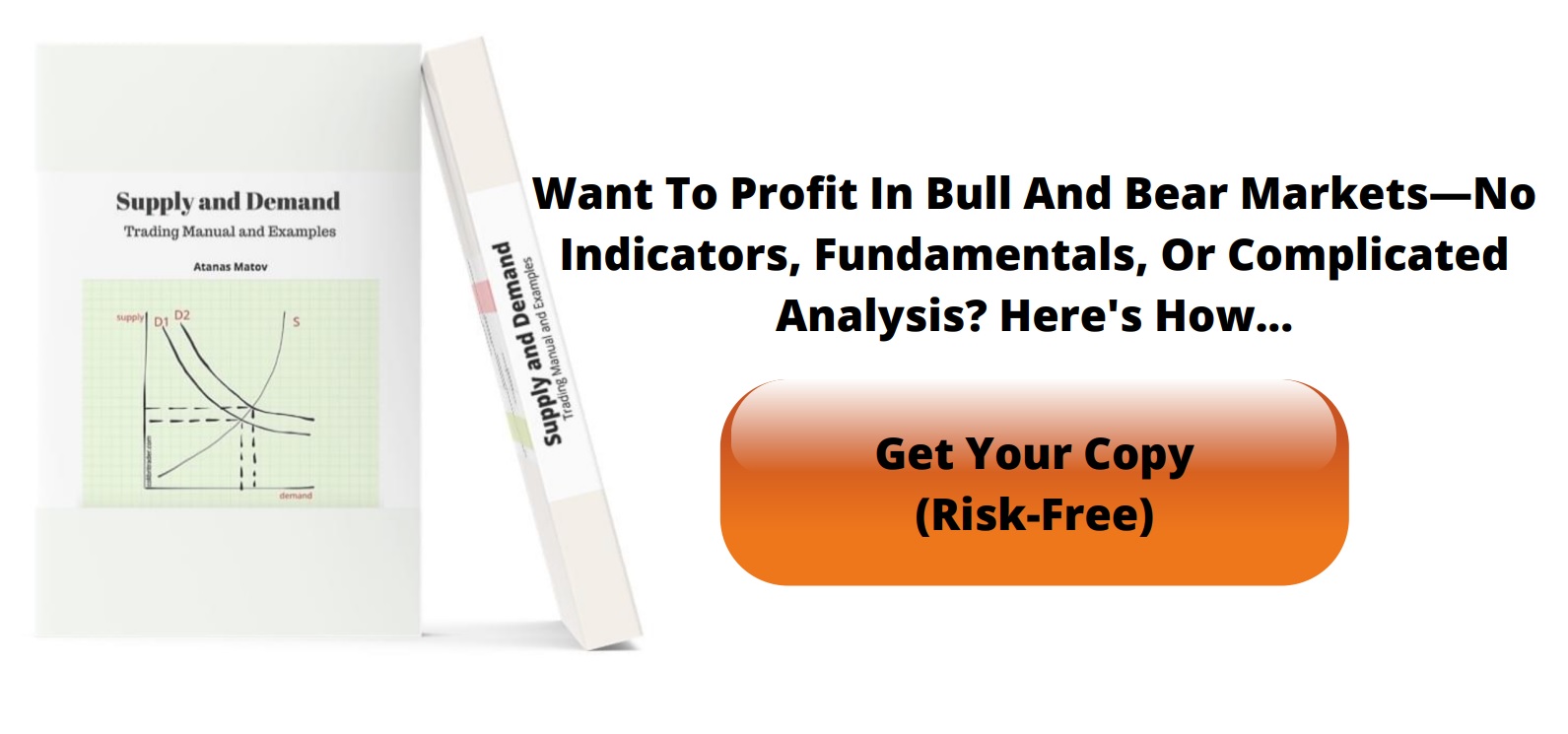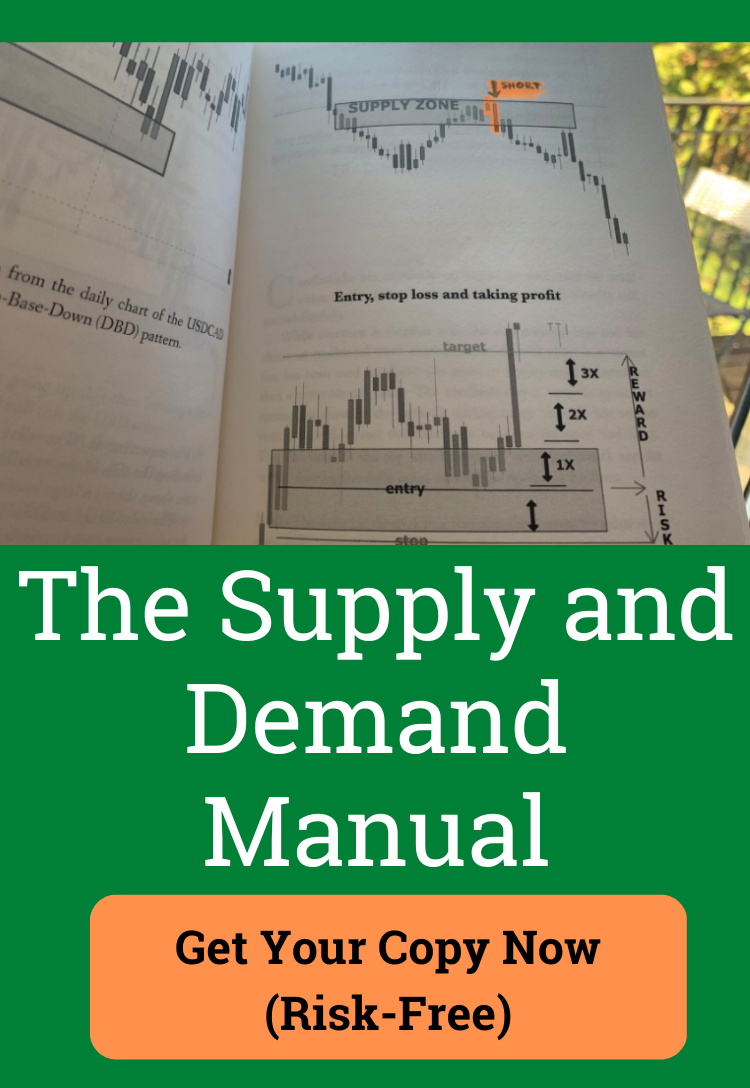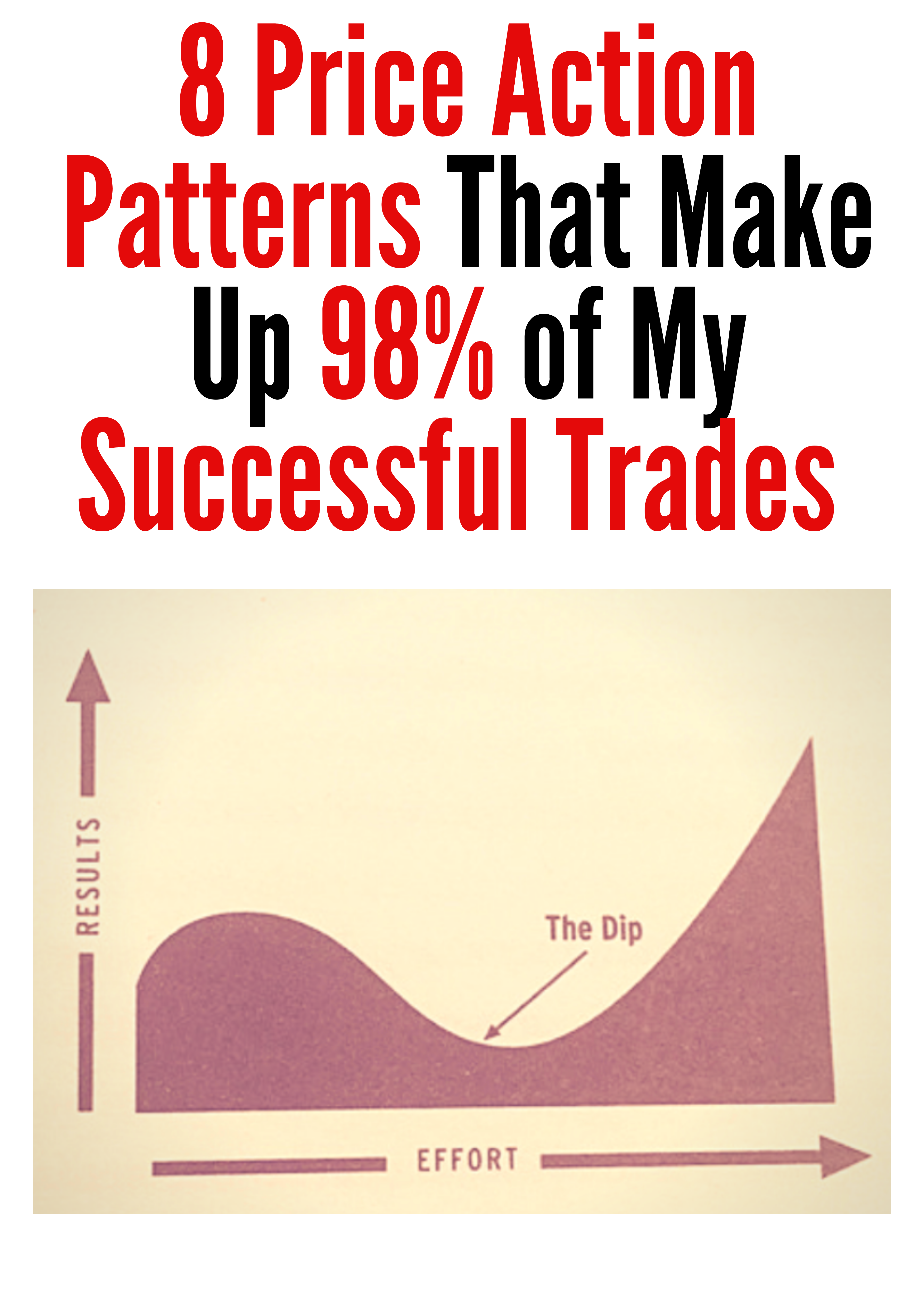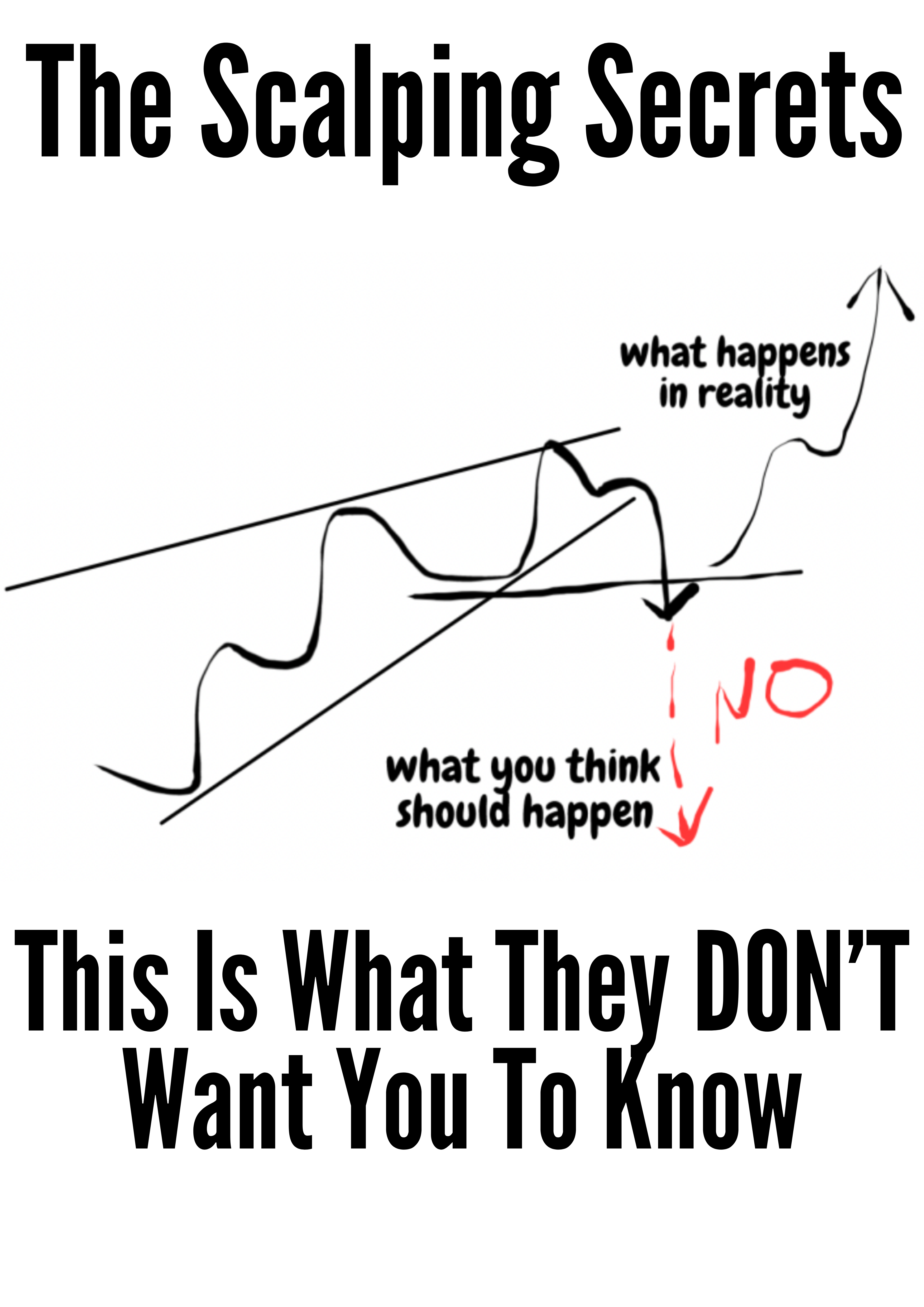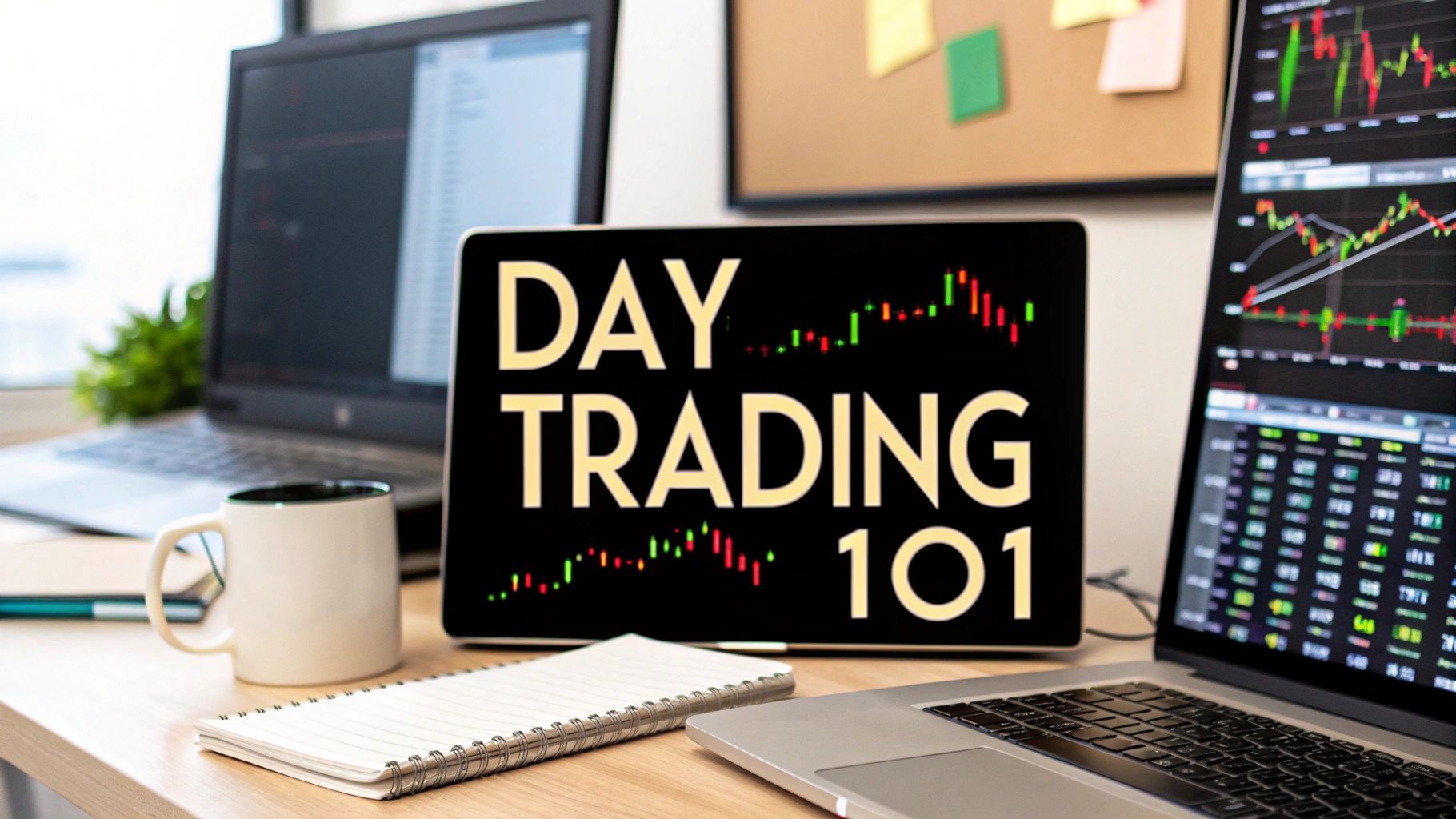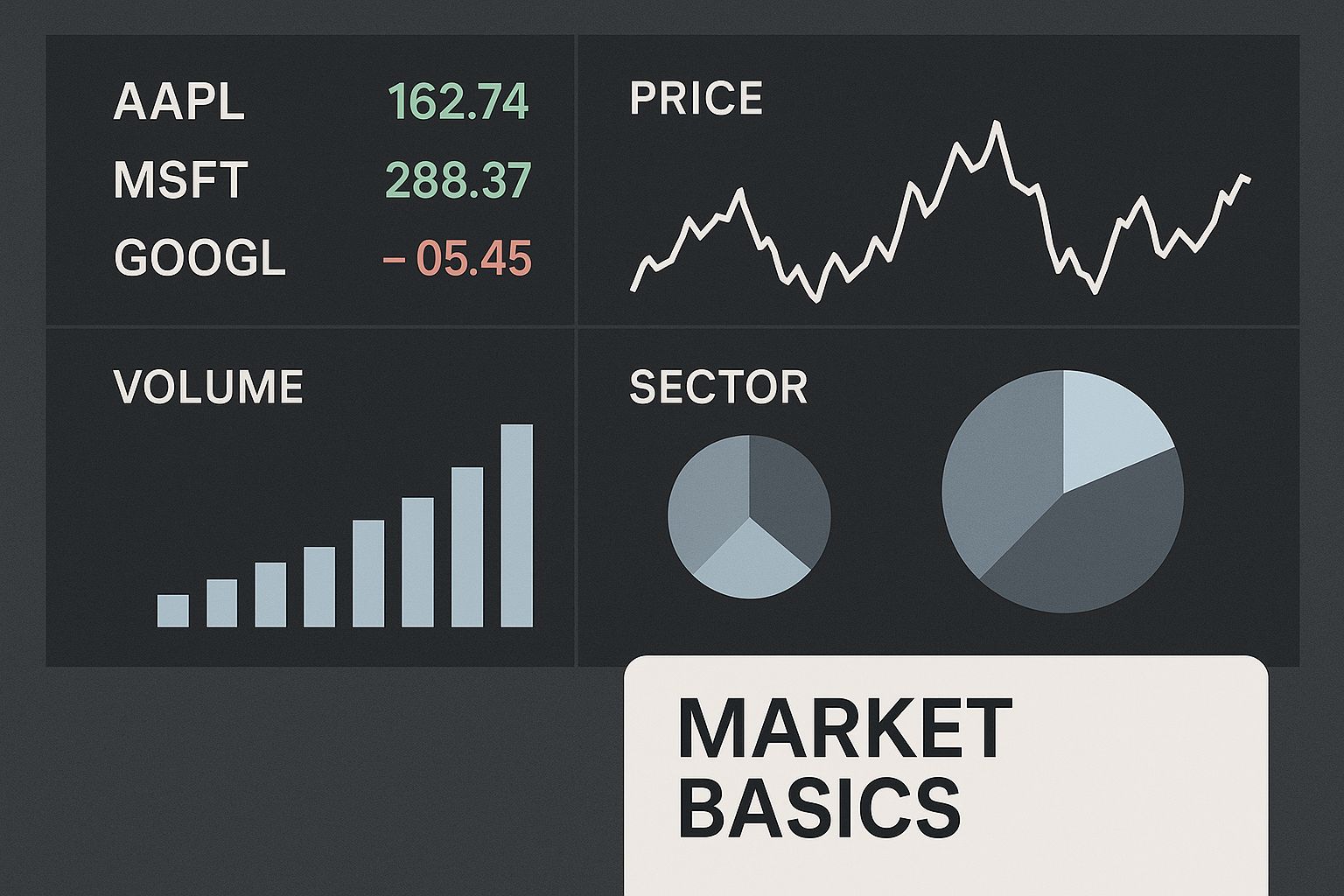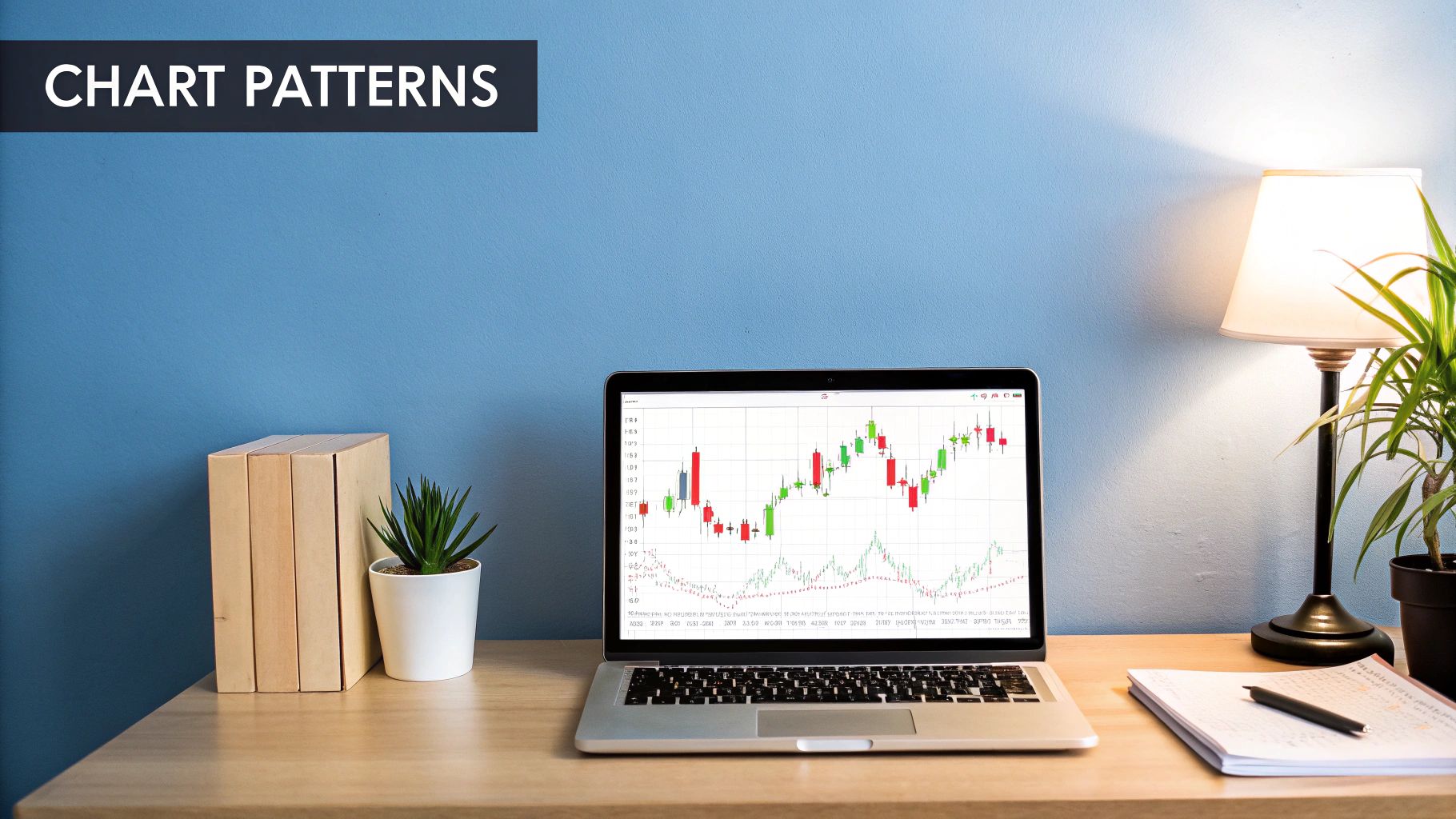Day Trading for Dummies: Easy Strategies for Beginners
Demystifying Day Trading: What Beginners Need to Know
Day trading can feel exciting, with its promise of quick profits and financial independence. But new traders need a realistic view, looking past the hype to understand the core principles that separate successful day traders from the rest.
Understanding the Basics of Day Trading
What is day trading? It involves buying and selling financial instruments, like stocks or currencies, within the same trading day. The aim is to profit from small price swings, not long-term growth. This differs from traditional investing, which focuses on holding assets for longer periods.
It's also vital to recognize the risks. Day trading's popularity surged during the COVID-19 pandemic, influenced by factors like remote work and market volatility. Online trading platforms and social media also contributed to the increased activity. However, this influx of new traders highlighted day trading's difficulties. The attrition rate is high: roughly 40% of day traders quit within the first month, and only about 13% continue after three years. More detailed statistics are readily available.
Key Differences Between Day Trading and Investing
Day trading and long-term investing require different mindsets. Long-term investors prioritize fundamental analysis, examining a company’s financial health and growth potential. Day traders often rely on technical analysis, studying price charts and patterns to anticipate short-term market moves.
Day traders must accept higher risk and uncertainty. Discipline is essential for following a trading plan and managing emotions, particularly during volatile periods. Successful day traders have clear strategies for cutting losses and taking profits, preventing emotional decisions.
Is Day Trading Right for You?
Consider if your personality suits day trading's demands. It requires focus, resilience, and rapid decision-making under pressure. This fast-paced environment isn't for everyone. Some thrive, while others find it overwhelming. Understanding your strengths and weaknesses is crucial before starting. This self-awareness helps you make informed choices and manage expectations realistically.
Building Your Trading Command Center: Tools That Matter
Beyond the allure of expensive software and complex setups, aspiring day traders often wonder what truly matters when starting. Success for beginners hinges on prioritizing function over flash, recognizing which tools genuinely impact results. This means building a workspace that's efficient, affordable, and tailored to your needs, not just visually impressive.
Essential Tools for the Day Trader
Starting your day trading journey doesn't require top-of-the-line equipment. A few key tools are all you need to begin:
- A reliable computer: A fast processor, ample RAM, and a stable internet connection are essential for swift trade execution.
- A fast internet connection: In the fast-paced world of day trading, lag can be costly. A high-speed, reliable internet connection is non-negotiable.
- A brokerage account: Select a platform with low fees, a user-friendly interface, and access to your target markets. You can learn more about brokerage accounts at Investopedia.
- Charting software: Your brokerage usually provides basic charting tools. Learning to use these effectively is crucial for analyzing price movements and identifying potential trading opportunities.
As you gain experience and refine your strategies, your toolkit will naturally expand. Further reading on this topic can be found at How to Master….
Focusing on Functionality Over Flash
Many new traders fall into the trap of investing in expensive trading platforms packed with features they neither understand nor need. While advanced tools can be beneficial later, simplicity is key in the beginning. Mastering the basics on your brokerage’s standard platform allows you to grasp essential concepts without the distraction of complex functionalities.
Think of it like learning to drive. Starting in a Formula 1 car would be overwhelming and likely disastrous. It's far more effective to begin with a standard vehicle, learning fundamental driving skills before progressing to more advanced machines. Day trading follows a similar principle: master the basics before investing in complex, costly tools.
Gradual Upgrades as Your Skills Develop
This infographic illustrates a trader’s screen displaying market data, emphasizing the importance of understanding market fundamentals. Even with access to advanced tools, success in day trading depends heavily on foundational knowledge.
As your market understanding deepens and your trading strategy evolves, you can strategically upgrade your tools. This might involve adding real-time news feeds, Level 2 market data, or specialized charting software like TradingView. Implement these upgrades gradually, ensuring each tool serves a specific purpose within your overall trading strategy. Avoid adding tools for the sake of appearance; instead, select tools that address a specific need or enhance your existing process. This focused approach prevents unnecessary expenses and allows you to build a truly efficient and personalized trading command center.
To help illustrate the differences between popular platforms, let's look at a comparison table. This table focuses on beginner-friendly options and highlights the key features, costs, and suitability for various trading styles.
Comparison of Popular Day Trading Platforms for Beginners
| Platform | Account Minimum | Trading Fees | Markets Available | Charting Tools | Mobile App | Beginner Rating |
|---|---|---|---|---|---|---|
| TD Ameritrade (thinkorswim) | $0 | $0 commission for stocks and ETFs | Stocks, ETFs, Options, Futures, Forex | Advanced charting & analysis tools | Yes | Excellent |
| Fidelity | $0 | $0 commission for stocks and ETFs | Stocks, ETFs, Options | Robust charting tools | Yes | Very Good |
| Webull | $0 | $0 commission for stocks and ETFs | Stocks, ETFs, Options, Crypto | Basic charting tools | Yes | Good |
| Interactive Brokers (IBKR) | $0 | Tiered commission structure | Stocks, ETFs, Options, Futures, Forex, Bonds | Professional-grade charting | Yes | Intermediate |
| Robinhood | $0 | $0 commission for stocks and ETFs | Stocks, ETFs, Options, Crypto | Limited charting tools | Yes | Fair |
This table provides a quick overview of some popular platforms. As you can see, even with no account minimum, there are differences in the tools offered. Choose the one that best aligns with your current needs and financial goals. Deeper research into individual platforms is always recommended.
Choosing Your Battlefield: Markets Worth Your Attention
For aspiring day traders, picking the right market is just as important as choosing the right tools. Different markets have different characteristics, and a successful strategy in one market might not work in another. It's not about chasing the latest trends; it's about understanding each market's nuances and finding the one that best fits your personal trading style and circumstances. This includes carefully considering factors like liquidity, capital requirements, and trading hours.
Liquidity and Volatility: Two Sides of the Same Coin
Liquidity, how easily an asset can be bought or sold, is essential for day traders. High liquidity means you can quickly enter and exit trades, minimizing slippage (the difference between the expected price and the actual execution price) and maximizing profit potential. Volatility, the extent of price fluctuations, is another key factor. Volatility creates trading opportunities, but it also increases risk.
The Forex market is a great example. It's incredibly liquid, with an average daily trading volume of $7.51 trillion in April 2022. The EUR/USD pair alone accounted for $1.71 trillion, or 22.7%, of this volume. This high liquidity makes Forex attractive to day traders, allowing them to capitalize on even small price movements. You can find detailed statistics here. However, Forex can also experience rapid price swings, requiring quick thinking and disciplined risk management.
Stocks: Exploring the Equity Landscape
The stock market offers a wide variety of companies to trade, from well-established corporations to emerging startups. This diversity allows traders to specialize in particular sectors or follow specific company news. However, individual stocks can have periods of low liquidity, especially penny stocks, which can make quick entries and exits difficult. Also, the capital requirements for certain strategies, like short selling, can be significant.
Futures: Using Contracts for Potential Profit
Futures contracts are agreements to buy or sell an asset at a predetermined price on a future date. They offer leverage, meaning traders can control larger positions with a smaller upfront investment. Leverage can amplify profits, but it also magnifies losses. The futures market demands a solid understanding of contract specifications and margin requirements, which can make it more challenging for new traders.
Cryptocurrencies: A Volatile Trading Environment
The cryptocurrency market, with its 24/7 availability and often extreme price fluctuations, might seem appealing to day traders. However, this volatility brings significant risks. Regulatory uncertainty and the potential for rapid, unpredictable price swings create a high-stakes environment. Security concerns related to cryptocurrency exchanges add another layer of complexity.
Choosing the Right Market for You
The ideal market depends on your personal preferences, risk tolerance, and available capital. Stocks, with their diverse range of companies and varying liquidity, may suit traders focused on specific sectors. Forex, with its high liquidity and 24/5 availability, can be appealing to those who prefer frequent trading opportunities. Futures might attract traders comfortable with leverage and more complex instruments. Cryptocurrencies, with their high volatility and 24/7 access, might be considered by traders with a high-risk appetite. Ultimately, understanding each market's unique characteristics is key to success. Colibri Trader offers resources and guidance to help you navigate these market dynamics and develop effective trading strategies for your chosen market.
Trading Strategies That Actually Work for Beginners
Understanding market characteristics is essential for trading success. But equally vital is choosing the right strategies, especially for beginners. Starting with day trading can feel overwhelming, but some approaches offer a good balance of simplicity and effectiveness. These strategies typically provide clear entry and exit signals, making them easier to learn and use in the fast-paced trading environment. For a deeper dive into beginner strategies, check out Day Trading Strategies For Beginners.
Let's explore a few of these beginner-friendly strategies. A clear understanding of each approach will empower you to make informed decisions about which one best suits your trading style and risk tolerance.
Scalping: Small Profits, Quick Trades
Scalping is all about making small profits from tiny price fluctuations, holding trades for mere seconds or minutes. This rapid-fire approach demands focus and discipline. It's a way to capitalize on short-term market volatility, aiming for numerous small gains that add up over the trading day. For example, a scalper might target a $0.10 profit per share and repeat the process many times. Highly liquid markets, like Forex, are often preferred by scalpers.
Momentum Trading: Riding the Wave
Momentum trading centers around identifying stocks with substantial price movement and riding the wave. Traders aim to enter a trade early in a trend and exit before it loses steam. This strategy relies heavily on speed and recognizing patterns in price action. While potential gains can accumulate quickly, risk management is crucial. Stop-loss orders are vital for limiting potential losses should the momentum unexpectedly reverse.
Pullback Trading: Buying the Dip
Pullback trading involves spotting temporary price dips within a larger uptrend, buying the asset at a discounted price. The goal is to enter at a favorable level before the price resumes its upward trajectory. However, distinguishing a temporary pullback from a trend reversal takes careful analysis. Traders often use support levels on price charts to pinpoint potential pullback entry points.
To help you compare these strategies, the following table summarizes their key aspects:
To help you compare these strategies, let's take a closer look at how they stack up against each other in a table format. This overview will highlight the key differences and similarities to consider when choosing your approach.
Day Trading Strategy Comparison for Beginners
Overview of beginner-friendly trading strategies with their key characteristics, suitable markets, and typical time commitments
| Strategy | Complexity Level | Best Markets | Time Commitment | Typical Profit Target | Stop Loss Range | Beginner Suitability |
|---|---|---|---|---|---|---|
| Scalping | High | Forex, Stocks | Very High (Seconds to Minutes) | Very Small (e.g., $0.10/share) | Very Tight | Low (requires experience) |
| Momentum Trading | Medium | Stocks, Forex | Medium (Minutes to Hours) | Medium | Medium | Medium |
| Pullback Trading | Medium | Stocks, Forex | Medium (Minutes to Hours) | Medium | Medium | Medium |
As you can see, each strategy caters to a different trading style and risk appetite. Scalping is the most demanding, requiring quick decisions and constant monitoring. Momentum trading offers the potential for larger profits but necessitates strict risk management. Pullback trading takes a more patient approach, demanding the ability to identify favorable entries within established trends.
Choosing the Right Strategy for You
Finding the right strategy, much like selecting a market, depends on your individual preferences and risk tolerance. Scalping suits traders comfortable with rapid decision-making under pressure. Momentum trading might appeal to those seeking higher potential returns but requires disciplined risk management. Pullback trading offers a more patient approach, needing skill in identifying opportunities within ongoing trends. You may find resources like How to master… helpful as you explore various trading strategies. Ultimately, successful day trading involves understanding not just the mechanics of a strategy but how it aligns with your personal trading style.
Mastering Risk: Why Most Day Trading Beginners Fail
The image above shows a classic picture of day trading: multiple monitors displaying complex charts. Many beginners are drawn to this image, thinking it represents the path to success. However, the truth is quite different. Success in day trading, particularly for beginners, relies less on sophisticated setups and much more on sound risk management. The unfortunate reality is that most beginners don't fail because of flawed strategies. They fail because they don't adequately protect their capital. This section explores the common traps that snare new day traders and, importantly, how to avoid them.
Understanding the Importance of Risk Management
Risk management is the bedrock of successful day trading for everyone, especially those new to the game. It encompasses a set of practices designed to safeguard your capital from substantial losses. This is particularly vital during the initial learning stages, when mistakes are unavoidable. Effective risk management acts as a buffer, allowing you to learn from your inevitable errors without wiping out your trading account.
It's important to understand that risk management isn't about eliminating losses entirely. That's simply not possible in the markets. Instead, it's about minimizing the impact of those losses and ensuring your long-term survival. This allows you to gain experience and refine your trading strategies over time.
The behavior of other traders also significantly impacts risk management. Surprisingly, 90% of day trading volume is attributed to traders with a history of losses. You can find more about trading volume here. This stark statistic underscores the difficulty of day trading and the absolute necessity of a well-developed strategy, combined with diligent risk management.
Practical Risk Management Techniques for Beginners
Here are some practical risk management techniques that every beginner should implement:
- Position Sizing: This is the process of deciding how much of your capital to allocate to each trade. A widely accepted rule is to risk no more than 1% of your total account balance on any single trade. This limits the potential damage of any individual losing trade.
- Stop-Loss Orders: These orders automatically exit a trade when a pre-determined price level is hit. Stop-loss orders are vital for capping potential losses if a trade moves against your expectations. They also help remove emotion from trading decisions.
- Daily Risk Limit: Establish a maximum daily loss limit. When you reach this limit, stop trading for the day. This helps to prevent emotional trading and further protects your capital from significant drawdowns. It enforces discipline and prevents chasing losses, a common pitfall for new traders. More information on how to master risk management can be found here.
- Regular Review and Adjustment: Consistently review your trading performance and adapt your risk management plan as needed. Markets are dynamic, and your plan should evolve along with your growing skills and experience. You might adjust your position size as your account grows or refine your stop-loss strategy based on prevailing market conditions.
The Psychology of Risk Management
Successful day trading demands not only practical techniques but also psychological fortitude. Fear and greed are the two primary emotional obstacles day traders face. Fear can lead to prematurely exiting trades, missing potential profits. Greed, on the other hand, can cause you to hold onto losing trades for too long, hoping for a reversal. These emotional reactions can undermine even the best-laid trading plans.
Managing these emotions and maintaining discipline, particularly during inevitable losing streaks, is essential. Keeping a trading journal is a valuable tool. It helps you document your emotional responses and recognize patterns that lead to poor decisions. This self-awareness is key to building a strong psychological framework for effective risk management.
Creating Your Trading Roadmap: From Plan to Profit
Successful day trading isn't about luck. It's about having a solid plan. Think of it like a roadmap. A well-defined trading plan keeps you directed and focused on your trading goals. This section will guide you in developing a comprehensive trading framework, covering everything from pre-market preparation to analyzing your trades after the market closes. This includes setting realistic goals, consistently tracking your progress, and learning from both your wins and losses.
Building Your Trading Plan: A Step-by-Step Guide
Your trading plan is your personalized strategy for navigating the complexities of the market. It should be specific, measurable, achievable, relevant, and time-bound (SMART). Here's a step-by-step process for building a trading plan tailored to your needs:
-
Pre-Market Routine: Start your day by reviewing market news, checking economic calendars like those available on TradingView, and pinpointing potential trading opportunities. This sets the stage for a productive trading session. Experienced traders often stress the importance of a consistent pre-market routine.
-
Defining Your Trading Strategy: Determine the specific strategies you’ll employ, such as scalping, momentum trading, or pullback trading. Knowing your approach beforehand helps you avoid impulsive decisions when the market opens.
-
Setting Clear Entry and Exit Points: Predefine your entry and exit points for every potential trade. This helps remove emotion from the equation during live trading. Knowing your exit strategy before entering a trade is crucial for managing risk.
-
Determining Position Size and Risk Management: Decide how much capital you’re willing to risk on each trade. Many traders advise risking no more than 1% of your total account balance. Implement stop-loss orders to limit potential downside. This disciplined approach is essential for long-term success.
-
Post-Trade Analysis: At the end of each trading session, review all your trades. Analyze both your successful and unsuccessful trades to pinpoint areas for improvement and reinforce positive trading habits. Consistent review is a cornerstone of refining your strategies and evolving as a trader.
Tracking Progress and Staying Accountable
A trading journal is an invaluable tool for tracking your performance. Meticulously record every trade, noting your entry and exit points, position size, profits and losses, and your emotional state during the trade. As shared on The Humbled Trader, journaling can reveal behavioral patterns and highlight the impact of emotions on trading decisions.
Accountability is also key. Connect with a trading buddy, join a trading community, or work with a mentor. Sharing your goals and progress with others keeps you focused and motivated. Just like an athlete benefits from a coach, having accountability in trading cultivates discipline and promotes continuous improvement.
Learning From Experience: Adapting and Evolving
No trading plan is set in stone. As you gain experience, adapt your approach. Markets are dynamic, and your understanding of them will grow. Even seasoned traders, like Ross Cameron from Warrior Trading, emphasize the importance of adapting to changing market conditions and learning from every trade, especially after losses.
Regularly revisit your trading journal, analyze your wins and losses, and remain open to adjusting your strategies. You might discover that a particular strategy, like scalping, doesn't fit your personality, or that your risk tolerance is different than you initially thought. This ongoing refinement is what distinguishes consistently successful traders.
Ready to elevate your trading? Colibri Trader offers comprehensive training programs to help you master day trading with a clear, actionable approach. Explore our programs and discover how we can support your journey toward consistent profitability in the markets.

